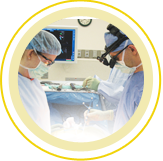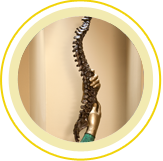If you have a growing tween or adolescent, you are aware of how they are changing day to day. Growth spurts, voice changes, and sudden hair growth clearly note if puberty is in full bloom. During the hot days of summer kids are wearing t-shirts and bathing suits, so the shape of their bodies is more evident to parents. That’s why summer can be a prime time for scoliosis symptoms to become noticeable.
What Is Scoliosis?
Scoliosis diagnosed during early puberty is known as idiopathic scoliosis. With scoliosis, the vertebrae in the spine form a curve rather than a straight line. It can be shaped like a C or an S, and if it becomes worse, the spine can be twisted as well. The symptoms are gradual and painless so your child will not realize what is happening, but an observant adult can. You just need to be aware of the signs.
The cause of idiopathic scoliosis is unknown, and about 3% of youngsters develop this disorder according to the American Academy of Family Physicians. Scoliosis is mostly mild for patients of a young age, but it can become much worse as the child grows if left undiagnosed and untreated.
Long term effects of scoliosis can include chronic back pain, arthritis, severe respiratory problems from the rib cage putting pressure on the lungs and heart, and decreased ability to exercise.

Signs and Symptoms of Scoliosis
Parents should be on the lookout for the following signs of scoliosis:
- One shoulder blade is more prominent than the other
- Uneven shoulders
- Uneven waist
- The head is slightly off center
- Ribcage is not symmetrical
- Uneven leg length
- Leaning to one side
- One hip is higher than the other
- Trunk tilt to the left or right
It’s possible that parents may not notice signs of scoliosis because it’s a condition that develops slowly over time. Look carefully, and if you observe any of these symptoms, consult with Spine & Scoliosis Specialists right away for proper diagnosis.
Risk Factors for Scoliosis
Both men and women can develop mild scoliosis, but females seem to have a higher risk for more severe cases. Babies can have scoliosis, although boys and girls in early puberty are at a higher risk. Lastly, family history can also play a part.
Carrying heavy backpacks, having poor posture, and playing sports have each been proven as activities that do not lead to scoliosis.
Treatment for Scoliosis
Identifying scoliosis at an early stage is the best case scenario. Once scoliosis has been diagnosed X-rays will be used at routine appointments with Spine & Scoliosis Specialists to monitor that the curve is not getting worse. Some children will not need any treatment.
If necessary, a brace in combination with physical therapy may be recommended to eliminate any further deterioration. In more severe cases, surgery may be required to strengthen the spine.
The warmer weather is a perfect opportunity to observe your kids and notice any abnormalities or unnatural shifts in the trunk of their body.
If you notice any signs or symptoms of scoliosis in your youngster, contact Spine & Scoliosis Specialists for an evaluation.
As always, if you have any further questions or would like to schedule an appointment, please call 336.333.6306 0r request an appointment online today!



